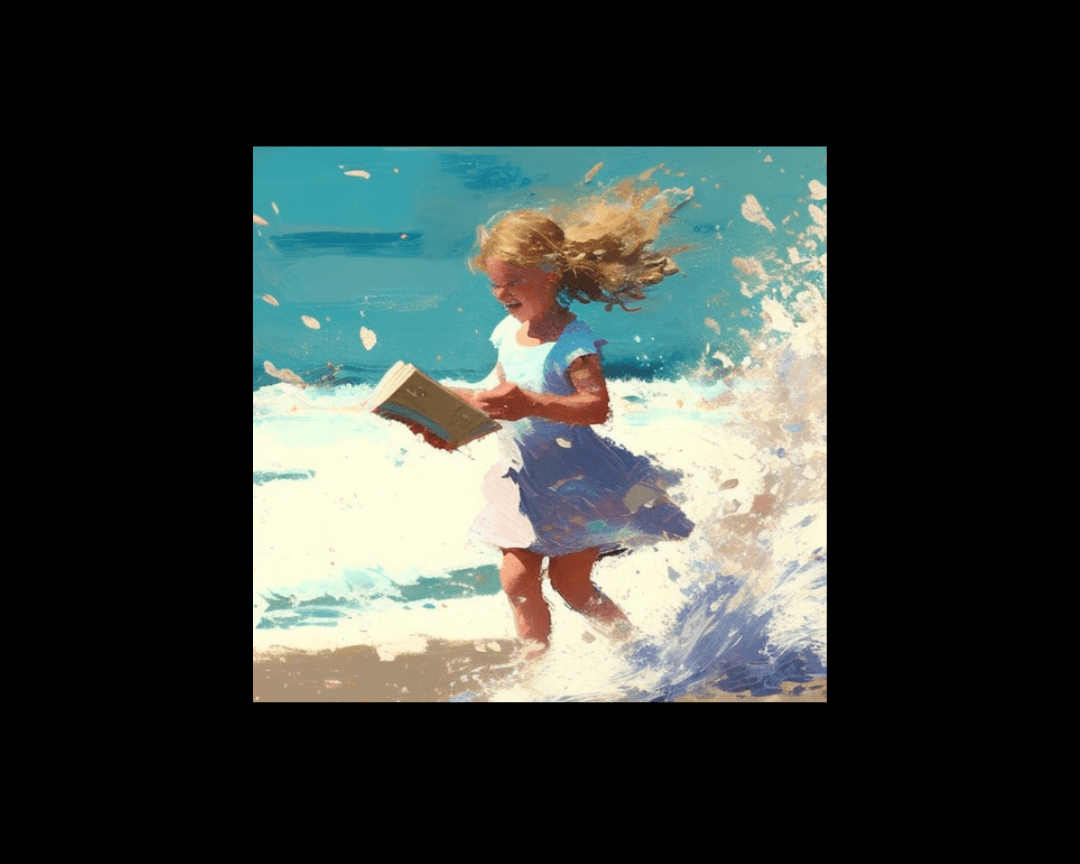Unlock the Essence of a Page Turner: The Significance of Rising Action
The Great Gatsby by F. Scott FitzgeraldHave you found yourself wondering what the secret is to captivating storytelling? I’ll clue you in: the rising...
4 min read
%20(1)-1.png) Viviana Whalen
:
Apr 10, 2023 12:28:13 PM
Viviana Whalen
:
Apr 10, 2023 12:28:13 PM

When was the last time you picked up a children’s book? If you don’t have kids, it’s probably been a while. Even if you do have kids, when was the last time you picked up a children’s book for your own enjoyment?
When you get sucked into reading The Very Hungry Caterpillar and Don’t Let the Pigeon Drive the Bus! over and over, you can start to lose sight of what these books can teach you. And I’m not just talking about how caterpillars turn into butterflies or how pigeons really shouldn’t be driving buses. I’m talking about simplicity. What makes these stories so captivating for young readers? Aside from the fun illustrations, the answer lies in the writing.
Continue reading to learn about what children’s literature can teach you about the strengths of simple and clear writing. Read to the end for a list of the best children’s books to improve your writing.
You may have been told to write at a middle school reading level when copywriting. Even when writing on complicated topics, keeping things simple and understandable is key. Children’s authors are constantly achieving this in their writing.
They take a complicated topic, such as trying new foods or families with divorced parents, and make it easy for children to understand. Now you may not think that trying new foods is a complicated topic, but to a child it is. This is a mindset that you should have when copywriting.
Anything that you write about could be complicated to someone who’s not familiar with the topic. While they may not be your target reader, keeping your writing accessible will open up your audience to include those you didn’t expect.
When you pick up a picture book, you probably notice some patterns. There are a few writing characteristics that children’s authors focus on in picture books to keep children interested.
One of the most important of these is pace. Draw a book out for too long and you lose the interest of your readers. Make the book too short and there’s no satisfaction. Appropriately pacing your writing will keep readers interested for as long as possible. There’s really no “best” word count for SEO – so you can make your writing as long as it needs to be to clearly address your content.
Something else that is often used in children’s literature is simple sentence structure. You’ll be hard pressed to find long, rambling sentences in picture books and children’s chapter books. Keeping writing concise ensures that readers will easily understand the information.
Lastly, children’s books appeal to kids because they use metaphors and narratives that children can relate to. It doesn’t matter if the book is humorous, sad or sweet – if the reader can connect to the story, they’ll want to read it over and over.
In copywriting you should always work to connect with your reader, even if the topic isn’t something most people are familiar with. Relating to your reader will keep them engaged until the end. You can do this through metaphors, questions and other literary devices.
In studying children’s librarianship I’ve learned about an important concept: mirrors, windows and sliding glass doors. This concept was created by Rudine Sims Bishop, a scholar on multicultural children’s literature. Here’s how it works in terms of children’s literature:
Writing can provide a window into another world, life, culture, etc. Readers can look through this window and learn about this world. However, writing can also provide a sliding glass door. Here, children can walk through and become a part of the world – they can equally participate as supporters and allies.
Finally, writing can be a mirror. These are the most important works of children’s literature. For a person to see their life experiences in someone else’s writing is a gift.
Want to learn more about what I’ve learned as a librarian and a copywriter? Read Why Copywriters Should Think Like a Librarian.
While it’s important to remember that windows, mirrors and sliding glass doors are about diversity and inclusion in children’s writing, we can take the bare bones of the concept and apply it to copywriting.
As copywriters, we typically offer a mirror to our audience in our writing. We are marketing a product or service to someone who has a need for it or who works in the industry.
But, we also want to provide windows. How can we attract those who may not be looking for that product or service, but can still benefit from it? Here, we offer them a window into what the company can do for them.
Lastly, we give them an opportunity to step through the sliding glass door. The sliding glass door is the call to action – a link to browse through the website, to read more blogs or head to their social media. The sliding glass door is what you hope will generate leads and turn them into a customer who later will see your writing as a mirror.
Have you ever read a children’s book that’s made you laugh or cry? Are there any children’s books that have stuck with you after all these years? If you’re going to learn anything from reading children’s literature, it should be that you can make the biggest impact in the simplest way.
Connect with your reader. Show them a window, mirror or sliding glass door. Keep it simple. This is how children’s literature has such an impact and how your writing can have an impact too.
Want to learn more about all things content? Keep reading on the Hire a Writer blog.
Looking for some great examples of children's literature that makes a big impact with few words? Check these out from your local library and see what you can learn about copywriting:
Sweety by Andrea Zuill (2019)

The Great Gatsby by F. Scott FitzgeraldHave you found yourself wondering what the secret is to captivating storytelling? I’ll clue you in: the rising...

In my previous post, I discussed one of the most popular story templates of all time: The Hero’s Journey. As noted in that discussion, the classic...

In the world of storytelling, opponents and their various forms give rise to profound conflicts and complications, much like the complexities of SEO....